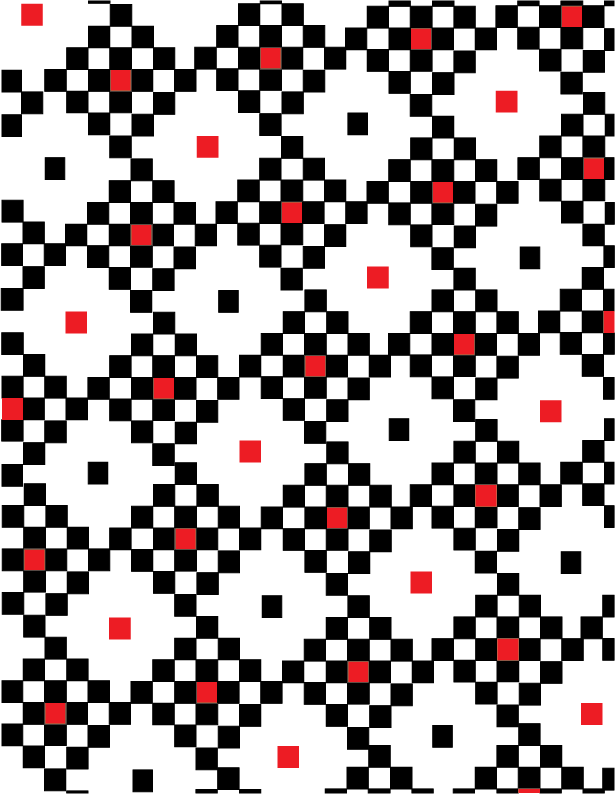In my psychology course, we were discussing how on average, a person will only spend 10% of their time in the present moment. 90% of the time, a person will think back to something in the or plans in the future. In the same class, we also talked about how a majority of cultures around the world have a version of a mandala- whether it’s geometric, pictorial, or 3D.
I want to make a version of a chess board where the user has to move the pieces to different white spaces on the corresponding square to trigger the output. In media, chess is often used as an analogy for life and it’s also used a symbol for strategy, so I thought it was fitting to use the components of the game to make people reflect on how they spend their time. The board I made is loosely inspired by the symmetry found in mandalas like the one linked. I originally wanted to make the board in a circular shape to play around with optical illusions where the shapes spiral into the center to imitate tunnel vision. I was trying to experiment with the position of each group to see if I could make it appear as if the piece was moving (almost like the one we looked at during the first lecture), so that’s something I’ll work on in execution.
The audio outputs will be everyday experiences (conversations or environment soundscapes) with a running dialogue focusing on either the past or future to show that the person is not actually present in the moment. There are 20 possible experiences for the user to interact with, but only 2 of the squares will be experiences where they’re present in the moment. I think for the visual output, I’m leaning towards the rotoscope option and creating duller scenes with the color scheme unless it is the 2 present experiences (those will be in brighter colors).
Do you think this this type of visual output would be impactful or redundant?

The visual output would be very eye-catching, and the play on the color scheme would help convey your message of differentiating present and future.
The output is very eye-catching and grabs my attention. The piece has rhythm and a certain flow to it with its repetition.
Not knowing what your style of rotoscoping looks like, I am definitely interested to see how it would look, and I think it would help portray the meaning of your message. I would like to ask how you plan to make the correct square hidden from the user? From what I recall, it’s a bit difficult to make your connections hidden behind a piece of paper. It’s a surreal process compared to mine, so I can’t provide much advice in terms of your particular piece.
What I plan on making the board 3D by using the pop up method. The white spaces would be the elevated areas to convey that those are the “playing squares” and the patterned spaces would be lower and (hopefully, this might be another iteration down the road) the individual blocks making it will also be at varying heights.
There will be no indication of which white space or spaces (I might cut it down to 10 spaces for the sake of time) will trigger what output until the user has moved a chess piece onto that spot.
The visual is an incredible sight and would greatly communicate a system and its relationships, truly showing the beauty of interactivity!
I think the visual is a very neat, abstract way to represent your idea! I think it works very well and the brightness of the colors will show your message.
I think the idea is very interesting, and I like the interactivity. what emotions will you contrast scenes in scenes that are in the moment versus the opposite?
I’m sorry, could you reword your question? I don’t quite understand what you were asking.
I think the visual output would be more interesting than redundant. Thought be careful with colors and motion as it make make the user feel somewhat sick.